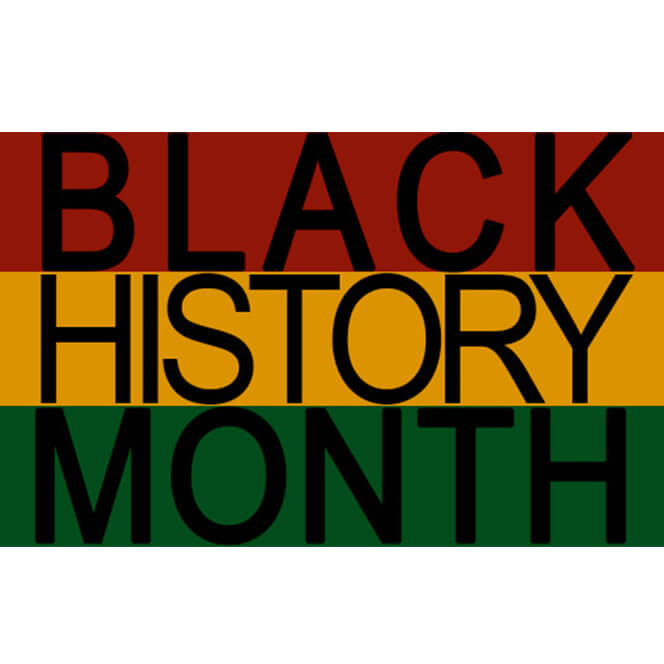In a two part series, Dr Chamion Caballero discusses both the importance of having aspects of black British history recognised more widely as intrinsic parts of British history rather than as ‘add ons’, as well as the challenges facing scholars involved in this work. In this first article, she highlights how the history of racial mixing in Britain is often overshadowed by its contemporary occurrence.
While a royal engagement always provokes a level of public interest in Britain, the usual social excitement was given additional impetus in 2017 when it was announced that Prince Harry, sixth in line to the throne, was not only planning to marry a divorced American woman but one who also happened to be of mixed racial parentage. In April 2018, Meghan Markle, the daughter of a white father and black mother, became the Duchess of Sussex in a ceremony watched by an estimated two billion people around the world. At every step of the way, the interracial nature of their relationship has attracted never-ending interest and commentary, not least the heralding of the couple as representative of what has been titled ‘the new normal’, that is, where the racial mixing and mixedness occurring in Britain is seen as illustrative not only of the country’s increased racial diversity but also of its increased racial tolerance.
Yet what is often forgotten in this celebration of modern multiculturalism is that Britain’s mixed race families did not spring forth whole from the loins of a twenty-first century diversity. Rather, as a wonderful body of scholarship is detailing, they are the latest issue of a longstanding and extensive history of interracial intimacy between black and other minority ethnic groups and white Britons. In addition to Laura Tabili’s work on racial mixing in twentieth century port side communities throughout the country, others have drawn attention to specific ethnic or geographical communities: John Belcham, for instance, has detailed the longstanding and wide-ranging racial mixing that has occurred in Liverpool for centuries as has Neil Evans in the Cardiff area; similarly, Richard Lawless has documented a vivid picture of a long settled mixed Arab and white community in the Holborn district of South Shields, while Maria Lin Wong and John Seed have brought to attention the historic interraciality between the Chinese and white Britons in Liverpool and Limehouse respectively. New studies are also emerging: David Holland’s research has begun to highlight early twentieth century relationships between South Asian men and white women in Sheffield, while Lucy Bland is soon to publish a groundbreaking study that foregrounds the voices of the ‘Brown Babies’ born to black American GIs and white women during World War 2. As Peter Aspinall and I also highlight in our recent book Mixed Race Britain in The Twentieth Century, such histories – particularly when they centre the voices of those mixing and of mixed race – challenge the one-dimensional picture of the history frequently recorded by contemporary ‘outsiders’ in academia, the media, government and the arts in which mixed racial relationships and people tended to be cast as relentlessly undesirable, tragic, hopeless, and peripheral. The reality, as it usually is when told by those from the inside, tends not to be so neatly bounded but is instead complex and complicated, messy and multifaceted.
While the above body of scholarship is steadily enhancing academic knowledge of the mixed race history of Britain, there yet remains an enduring gap in public representation and awareness. In the modern ‘celebration’ of racial mixing, for instance, few mixed race faces are seen from the generation who grew up in the 1950s and 60s: the emerging image of the British family as a beaming, vibrant multicultural grouping is a predominantly youthful one – typically a thirty or forty-something black father and white mother shown eating a meal, playing, or relaxing on the sofa with their school aged children, rather than the depiction of an equally twenty-first century picture of mixedness that is an elderly interracial couple or parent enjoying the company of their middle-aged mixed race children and their young adult grandchildren. Similarly, though creative representations of earlier interracial realities – such as Amma Asante’s 2013 film Belle, based on the life Dido Elizabeth Belle, a woman of mixed race raised in her eighteenth-century aristocratic British family – are breaking through into the mainstream, ignorance and confusion over the history of the minority ethnic presence in Britain and the continual levels of intermarriage with white Britons over the centuries is still prevalent. In response to an interview with the Sunday Times newspaper given by the actress Thandie Newton – raised in Cornwall by her black Zimbabwean mother and white British father – who noted that she struggled to get work in the UK because it was difficult to get cast in well-rounded roles in historical dramas such as Downton Abbeyand Victoria, a reader of the article commented:
“Britons like historical dramas and they expect them to be cast truthfully, and that means with white people. To say that there are no parts in this country for non-white actors is simply not true at all. TV dramas are always cast with non-white actors well beyond their proportional representation in the present population: but this type of casting must be in modern dramas. If non-white actors are cast in historical drama, that show is immediately spoiled because of the lack of reality and instead of watching and enjoying, our thoughts turn to box ticking and artificiality.”
As I suggested to the reader, however, not only do period dramas frequently not reflect the minority ethnic presence of their time but there is a case to be made that they could be enhanced by the inclusion of this presence with its rich, multilayered and complex history: what sparkle could have been brought to Downton Abbey, for example, by the introduction of a character based on the racially mixed Englishwoman Princess Sophia Duleep Singh – Queen Victoria’s goddaughter and a prominent suffragette – or Oei Hui Lan, the ethnic Chinese daughter of a billionaire Indonesian sugar magnate whose wealth and exploits made her the toast of London’s high society in the 1910s, her divorce from the well-to-do Englishman Beauchamp Caulfeild-Stoker and the custody of their child covered extensively in the media? For representations ‘below-stairs’ there are also a myriad of working-class minority ethnic lives that could also be drawn on for inspiration: for example, in 1910 – two years before Downton Abbey is set but in the same region – the dramatic suicide of a black West Indian father of eight children occurred after his estranged white partner repeatedly refused to return to live with him in the town of Maltby. As our research shows, though such lives may not have been so readily recorded and preserved as those ‘above stairs’, they are nevertheless a real presence with their own complex and multifaceted experiences and contributions to British history.
The recognition of a more multidimensional history of mixedness is not just critical for addressing the gaps in knowledge about the past but also for informing contemporary experiences. While prevailing official and social attitudes to mixing and mixedness have changed dramatically, racism – both explicit and institutional – still continues to inform and affect the lives of mixed race people and families. Despite the fact that those officially designated by the Census as ‘Mixed’ are now concentrated in the more advantaged socio-economic categories, children from particular mixed racial and ethnic backgrounds – namely White and Black Caribbean and White and Black African – are significantly overrepresented in the care system as well as within school exclusions and are underachieving educationally, while young ‘Mixed’ people and adults are not only overrepresented in mental health care but are also more likely to be a victim of crime.
Repeatedly, traditional pathologisations which see mixed race children are inherently ‘marooned between communities’ and their parents of dubious morality and capability have been identified as contributory factors to these outcomes – indeed, for all their wealth, even the Sussexes have faced public censure, hostility and threats due to their interracial relationship. Yet, once more, such patterns and assumptions aren’t always borne out in contemporary accounts or are the sum and total of the experience of mixed race people and their families. Indeed, both contemporary and historical accounts also indicate an overlooked sense of ‘ordinariness’, where many of those difficulties and challenges pointed to those mixing and of mixed race relate to wider social attitudes rather than their own internal contradictions, confusions or culture clashes. The ‘ordinary’ stories of ‘everyday’ people of mixed race – both now and then – are seldom told, but they are critical in presenting a more balanced picture of the experiences of ‘mixedness’ – one that is not all about cultural harmony and acceptance but equally one that is not all about tragedy, prejudice and difficulty. For when we slowly begin to uncover such accounts, which include the good, the bad and the quite simply mundane, we can start to see this generally hidden history of racial mixing in Britain as simply another part of the longstanding diversity and difference that is – and always has been – an underpinning feature of British life.
Dr Chamion Caballero is Visiting Senior Fellow, Goldsmiths, University of London and Director of The Mix-d Museum.

